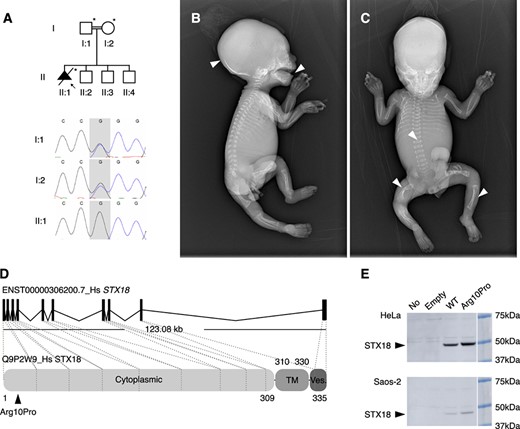Fig. 1 Pedigree of the family, radiographs of the proband, structure of the human STX18 gene and protein, and overexpression of human wild‐type (WT) and p.(Arg10Pro) STX18 proteins. (A) Pedigree of the Turkish family. The proband (II:1) is indicated with an arrow, and asterisks denote family members available for molecular testing. The parents are obligate heterozygous carriers of the identified homozygous STX18 variant in the proband (c.29G > C). (B, C) Radiographs of II:1 at 26 weeks of gestation reveal multiple fractures, thin ribs, abnormal cartilage in the spine (arrowhead), short and cracked femur (arrowhead), tibial bowing (arrowhead), irregular mandible (arrowhead), and severe cranial undermineralization (arrowhead). (D) Human STX18 consists of 10 exons and comprises 123.08 kb on chromosome 4; human STX18 protein (Q9P2W9) domain structure includes cytoplasmic, transmembrane (TM), and vesicular (ves) domains. The identified homozygous p.(Arg10Pro) variant is part of the N‐terminal α‐helical cytoplasmic domain. Numbers indicate amino acid residues. (E) Overexpression of WT and mutant STX18 proteins lead to stable protein products in HeLa and Saos‐2 cells.
Image
Figure Caption
Acknowledgments
This image is the copyrighted work of the attributed author or publisher, and
ZFIN has permission only to display this image to its users.
Additional permissions should be obtained from the applicable author or publisher of the image.
Full text @ J. Bone Miner. Res.

